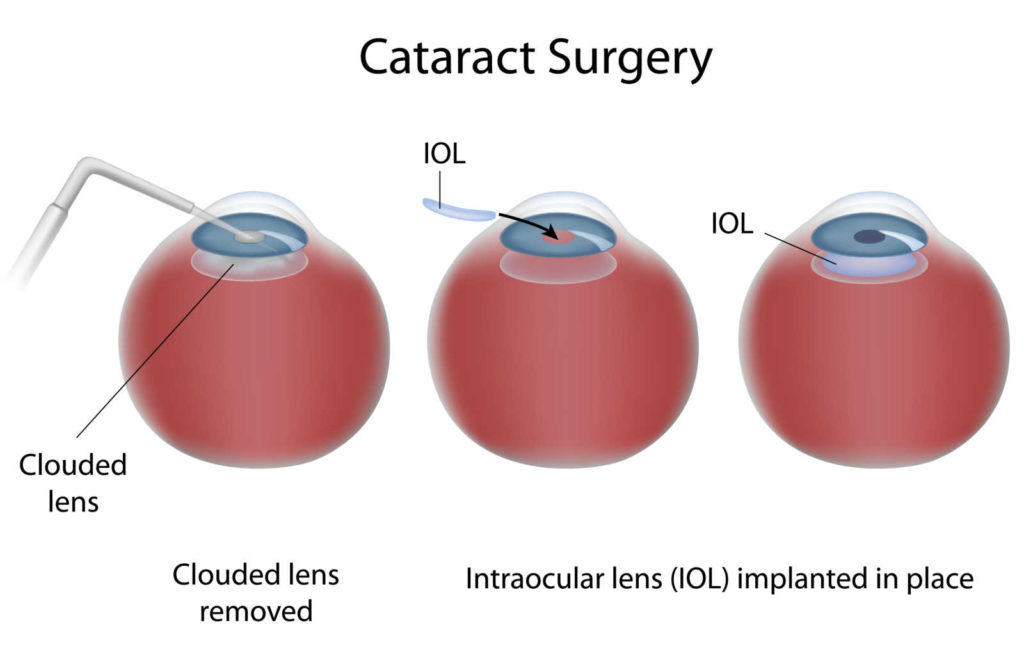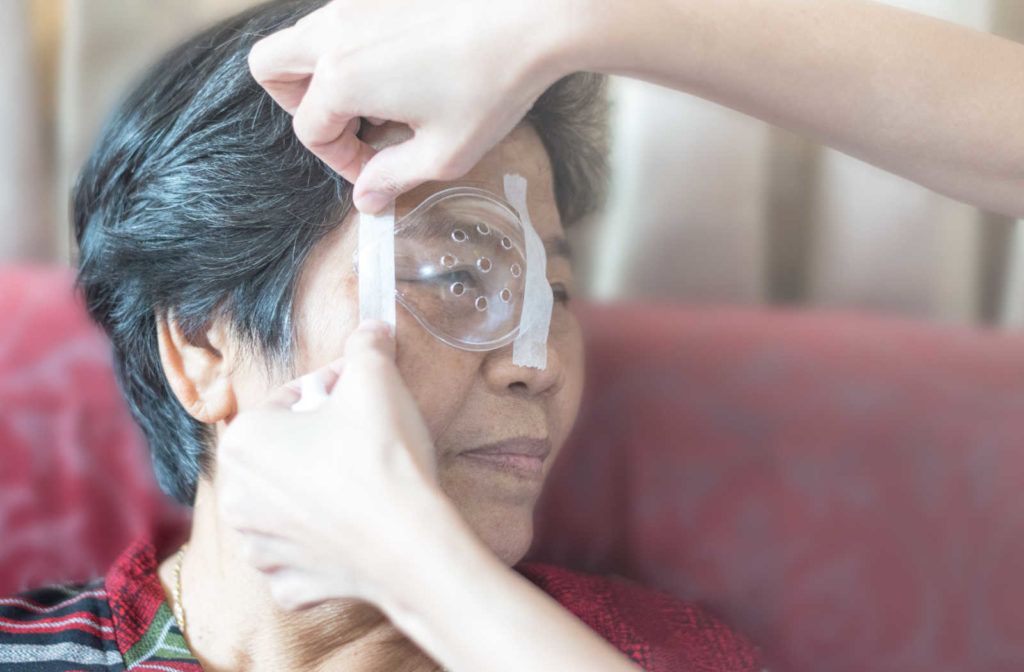Cataract surgery is a procedure used to remove a cloudy or opaque lens called a cataract and replace it with an artificial lens. It can significantly improve a person’s vision and quality of life.
Even though most cataract surgeries are successful and well over 90% of people see better after, it can take some time for your eyes to feel completely normal again. After cataract surgery, it’s normal for your vision to be temporarily blurry.
Your brain takes time to adapt to the new lens, and you can support this by increasing your eyes to more exposure and returning to daily activities.
About Cataracts
Cataracts occur when changes of proteins in a clear lens collect and clump together to become cloudy and prevent light from passing through. Cataracts are common and natural as you age and develop gradually over time. They can affect your vision in the following ways:
- Cloudy or foggy vision
- Difficulty seeing at night
- Sensitivity to light
- Seeing halos or glare
- Double vision
- Colours look faded

What Is Cataract Surgery?
Cataract surgery is a solution to remove a cataract to replace the cloudy lens with an artificial lens called an intraocular lens (IOL). Not everyone with cataracts requires surgery, but if it grows and affects daily life, surgery can help.
Here is what you can expect before, during, and after cataract surgery:
Before Cataract Surgery
A few weeks before your surgery, your eye doctor will assess your eyes and take measurements to choose the right lens implant for your eyes.
Types of intraocular lenses include:
- Monofocal IOLs
- Aspheric IOLs
- Toric IOLs
- Extended Vision or Extended Depth of Focus IOLs
- Refractive Bifocal IOLs
- Multifocal IOLs or Trifocal IOLs
During the Procedure
Cataract surgery is typically an outpatient procedure and usually takes 15 mins or less, when carried out by an experienced surgeon. Usually, patients will be awake during the surgery with their eyes numbed and receive light sedation if they wish.
After tiny incisions in the front of the eye, and a circular incision on the lens surface, an ultrasound probe breaks up the cloudy lens and sucks it up. An artificial lens takes its place. Afterwards, a protective shield is used to protect the eye.
If you need surgery in the other eye, you’ll usually wait a few weeks. Before leaving, your eye doctor and eye care team will provide aftercare instructions which may include:
- Resting completely for about a week
- Wearing the eye shield for a couple of weeks while sleeping
- Avoiding touching, rubbing, or putting pressure on your eye for a couple of weeks
- Avoiding makeup, soap, or dust, as this can irritate the eye.
- No driving for a week, and no swimming for two weeks
- No bending or picking up heavy things, as this can increase eye pressure and affect healing, and in some cases, the new intraocular lens alignment within the eye
- Antibiotic drops to prevent infection
- Steroid and NSAID drops to reduce and prevent inflammation
After Cataract Surgery
You will have a follow-up appointment the next day and again in a couple of weeks. Here is what you can expect after surgery and for recovery:
- Slight discomfort, itching, and blurriness are normal.
- Eye redness is temporary and should disappear in a few days.
- You may feel scratchiness or the sensation that something is in the eye.
Complete healing usually occurs over 8 weeks, but that doesn’t mean your vision will be as sharp as you expect after cataract surgery. Your brain also needs time to adapt to the artificial lens.
The eyes and the brain are functionally and anatomically linked. When light focuses on the retina, it transmits an electrical impulse to the optic nerve that travels to the brain and interprets this as an image.
After cataract surgery, even though the image you see is much clearer than before when you had a cataract, the brain may still perceive it a bit differently. The brain takes time to adjust to better vision, a process called visual neuroadaptation. Vision can improve after surgery with continuous exposure.
Neuroadaptation is the brain’s ability to adapt to changes induced in the quality of the retinal image by light dispersion after IOL implantation, such as halos, streaks or glare. Visual neuroadaptations are different for everyone and may take longer for some people.
You can train your eyes through common use and exposing them to light when ready, thus giving the eyes and the brain plenty of opportunities to adapt. These can include resuming some activities safely after one or two weeks after cataract surgery, as advised by your eye surgeon and eye care team and not before:
- Driving
- Exercise
- Reading, watching TV, and computer work
Learn More about Cataract Surgery
Training your eyes to see clearly after cataract surgery is possible as your brain learns to adapt to the point where your vision seems natural.
Before choosing to undergo cataract surgery, it can be useful to learn about the preparation and aftercare process. Your eye doctor can help you understand the process and what to expect.
If you have questions or concerns about cataract surgery, don’t hesitate to call and book an appointment with Vector Eye Centre.



